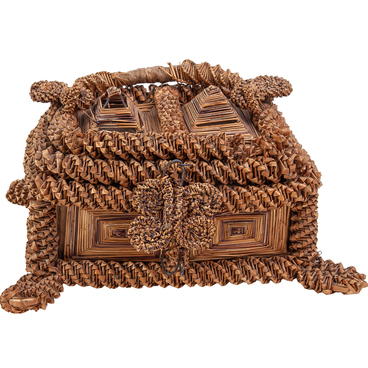A kerosene table lamp on a high metal stand from the famous German manufacturer Ehrich & Graetz is housed in the museum funds. In the house of the poet Majit Gafuri, it was used for lighting the living room.
Kerosene lamps appeared in 1853. The first to use a combustible mixture for lighting the rooms was suggested by Abraham Gesner, a Canadian geologist, who is considered to be the discoverer of kerosene. His idea was immediately taken up by other scientists and inventors because the light from kerosene lamp is brighter and cleaner than the light from other sources. Its first prototype was presented by Austrian pharmacists Ignacy Lukasiewicz and Johann Zech, who improved an existing oil lamp with kerosene. As a result, the first kerosene lamp illuminated the window of their employer’s pharmacy. It was called “Under the Star”.
In the same year of 1853, Rudolf Ditmar from Vienna proposed his design for a kerosene lamp. His model became the prototype of a series that began production in the United States in 1856. From that moment on kerosene-based lighting fixtures began to spread rapidly around the world. At the same time, the volume of oil production was growing, and kerosene became an available and rather cheap fuel.
At the same time, workshops began to appear. Lampshades, burners and lamp glasses for lamps — the very things that most often failed — were produced separately. However, the main element of any kerosene lamp was the wick. Its size determined the strength of the light.
Over time, much attention began to be paid to the design of lamps — they were often used to decorate the living room. The metal parts of the lamps were made of bronze, and less often of gilt or silver. Artists were engaged in the creation of new models.
Kerosene lamps remained in demand until the beginning of the 20th century, especially in rural areas. Nevertheless, they were soon replaced by electricity, which gradually supplanted all other forms of lighting in homes. Kerosene lamps were subsequently used only in special circumstances — for example, during war or expeditions.
Kerosene lamps appeared in 1853. The first to use a combustible mixture for lighting the rooms was suggested by Abraham Gesner, a Canadian geologist, who is considered to be the discoverer of kerosene. His idea was immediately taken up by other scientists and inventors because the light from kerosene lamp is brighter and cleaner than the light from other sources. Its first prototype was presented by Austrian pharmacists Ignacy Lukasiewicz and Johann Zech, who improved an existing oil lamp with kerosene. As a result, the first kerosene lamp illuminated the window of their employer’s pharmacy. It was called “Under the Star”.
In the same year of 1853, Rudolf Ditmar from Vienna proposed his design for a kerosene lamp. His model became the prototype of a series that began production in the United States in 1856. From that moment on kerosene-based lighting fixtures began to spread rapidly around the world. At the same time, the volume of oil production was growing, and kerosene became an available and rather cheap fuel.
At the same time, workshops began to appear. Lampshades, burners and lamp glasses for lamps — the very things that most often failed — were produced separately. However, the main element of any kerosene lamp was the wick. Its size determined the strength of the light.
Over time, much attention began to be paid to the design of lamps — they were often used to decorate the living room. The metal parts of the lamps were made of bronze, and less often of gilt or silver. Artists were engaged in the creation of new models.
Kerosene lamps remained in demand until the beginning of the 20th century, especially in rural areas. Nevertheless, they were soon replaced by electricity, which gradually supplanted all other forms of lighting in homes. Kerosene lamps were subsequently used only in special circumstances — for example, during war or expeditions.



